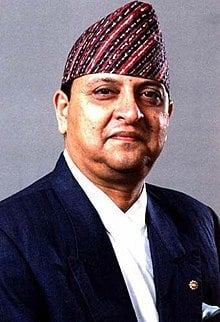As decolonization was embraced on the world stage, the U.S. government and its diplomats had to decide, “How do we…
Promoting International Tennis Diplomacy in Bahrain
In the heat of the Iran-Iraq War, paranoia and uncertainty engulfed the region, with many American allies looking to the…
60 Minutes in Central America: The Politicization of Development During the Cold War
Complex geopolitical realities, poor leadership, and economic dysfunction characterized the Cold War in Nicaragua, Honduras, and El Salvador. USAID (United…
One City, Two Countries: Manning the Mexican-U.S. Border in Nuevo Laredo
Bustling with commerce, illegal border crossings, and cocaine trafficking, in 2000, Nuevo Laredo was the third busiest visa post in…
The Fall of South Vietnam and Operation Babylift
The fall of Saigon and the chaotic evacuation of the U.S. Embassy is one of the most infamous episodes in…

Death, Love and Conspiracy: The Nepalese Royal Massacre of 2001 (Durbar Hatyakanda)
Facing domestic unrest, including a Maoist insurgency, the Nepalese royal family never suspected that the greatest threat to the monarchy…
Persuading an Arms Dealer to Come Clean in a New South Africa
Yacht trips, golf junkets, and private receptions with Oprah. These are rare events even in elevated diplomatic careers. Yet William…
Migrating with Iran’s Bakhtiari Tribe Before the Revolution: A Tale From the Foreign Service
Back when the United States had diplomatic missions in Iran, a young Foreign Service Officer travelled with members of the…
A Diplomat Recalls Escape From a Kidnapping in Uruguay
Kidnappings, particularly those of high-ranking political officials, were not uncommon in 1970s Uruguay given the prominence of an urban guerilla…
Latino American Ambassadors
Latino Americans have some of the lowest rates of participation in the federal workforce making it incredibly difficult for them…
